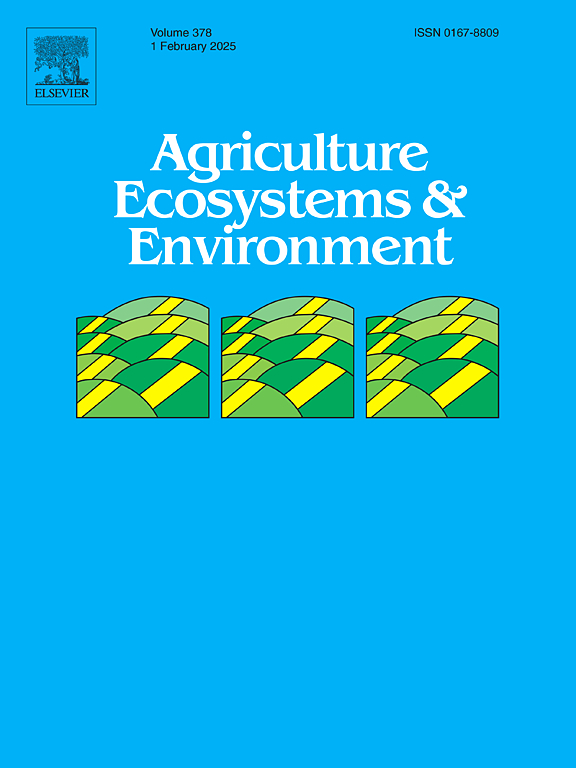Cover crop biomass production as a predictor of nitrogen fertilizer replacement value - legumes secure positive effects
IF 6
1区 农林科学
Q1 AGRICULTURE, MULTIDISCIPLINARY
引用次数: 0
Abstract
Cover crops can contribute to climate change mitigation by promoting soil organic carbon sequestration, retaining nitrogen (N) in soil and lower greenhouse gas emissions from reduced fertilization of following crops. Their N fertilizer replacement value (NFRV) varies based on cover crop type and management. This study aimed at identifying factors affecting cover crop NFRV as a means to guide N fertilizers reduction. Ryegrass (Lolium perenne L.; RG), plantain (Plantago lanceolata L.; PL), red clover (Trifolium pratense L.; RC), and two mixtures (RG+PL and RG+PL+RC) were sown in May 2020 and 2021 in an organic field trial, and terminated by either rotovation+ploughing or ploughing. Spring barley (Hordeum vulgaris L.) was used as a test crop to quantify NFRV. Before sowing spring barley, cover crop plots were not fertilized and control plots received 0, 50 and 100 kg mineral N ha−1. In both years, RG+PL+RC had the greatest aboveground biomass and biomass N yield in autumn (5.5 Mg ha−1, 128 kg N ha−1), while RG had the lowest (0.7 Mg ha−1, 21 kg N ha−1). Before termination in spring, differences among cover crop types were less pronounced with no effect of termination method on NFRV. However, the NFRV was significantly correlated to cover crop biomass (p < 0.001) in autumn (r = 0.83) and spring (r = 0.66). NFRV was as high as 100 kg N ha−1 with RC and RG+PL+RC, while negative values were obtained with autumn biomass below 1 Mg ha−1. We found a strong correlation between cover crop biomass and NFRV, which can guide N fertilization reduction if autumn cover crop biomass can be estimated. The threshold between positive and negative residual N effects at 1 Mg ha−1 confirms the need for a minimum cover crop biomass for providing desired ecosystem services.
求助全文
约1分钟内获得全文
求助全文
来源期刊

Agriculture, Ecosystems & Environment
环境科学-环境科学
CiteScore
11.70
自引率
9.10%
发文量
392
审稿时长
26 days
期刊介绍:
Agriculture, Ecosystems and Environment publishes scientific articles dealing with the interface between agroecosystems and the natural environment, specifically how agriculture influences the environment and how changes in that environment impact agroecosystems. Preference is given to papers from experimental and observational research at the field, system or landscape level, from studies that enhance our understanding of processes using data-based biophysical modelling, and papers that bridge scientific disciplines and integrate knowledge. All papers should be placed in an international or wide comparative context.
 求助内容:
求助内容: 应助结果提醒方式:
应助结果提醒方式:


